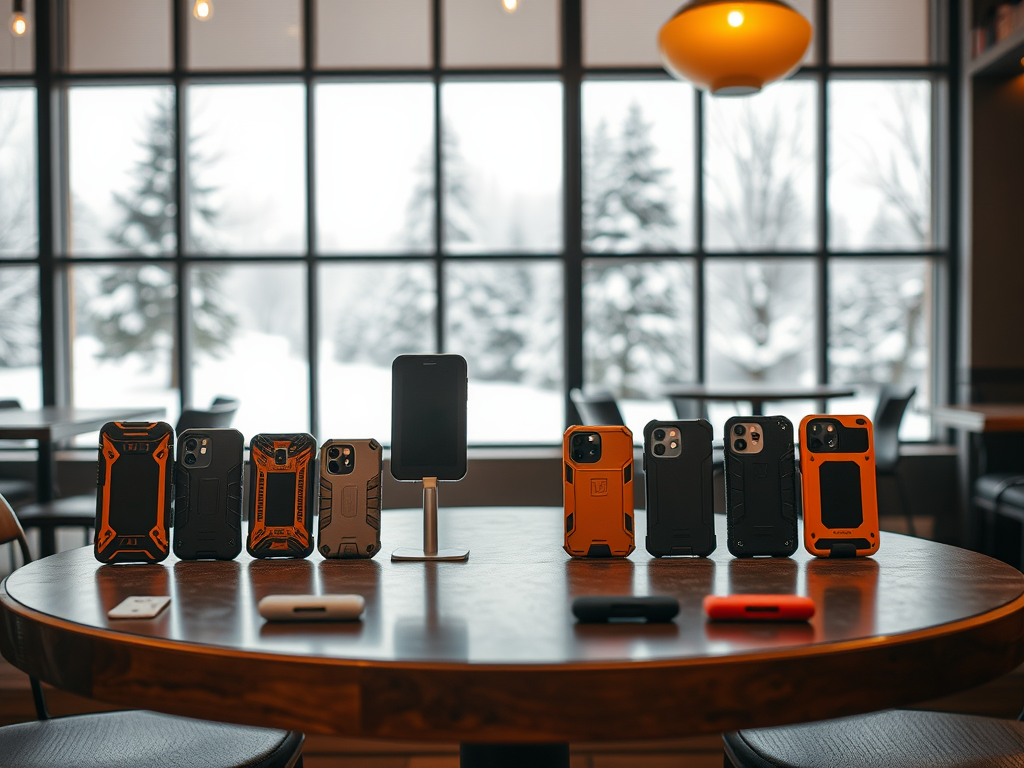As winter approaches, the everyday tasks we take for granted, like texting, calling, or even navigating with our smartphones, can suddenly turn into frustrating experiences. You might find yourself questioning why your phone isn’t responding as quickly as usual or why its battery drains faster than normal. This isn’t merely a quirk of technology; it’s a direct result of cold weather that can impact the internal components of your device. Understanding the role of insulation in maintaining your phone’s functionality during these chilly months is paramount, especially for those who rely heavily on their devices. Without proper precautions, your smartphone could suffer damage or, at the very least, diminished performance. Thankfully, there are several ways to safeguard your device against the elements.
Understanding Phone Insulation

Insulation is an essential concept not only in buildings but also in how we protect our electronics. Phone insulation ensures that your device can withstand colder temperatures without succumbing to performance issues. By acting as a barrier, insulation helps retain heat generated by electronic components, keeping them warm enough to function properly. Moreover, insulation impacts overall energy conservation, which is particularly crucial for devices that rely heavily on battery power. Many smartphones feature built-in insulation, but additional protective measures can enhance this effect.
The primary function of insulation is to reduce heat transfer. While we often think of insulation as something that keeps heat in, it also plays a critical role in preventing cold air from infiltrating your device. When temperatures drop, the internal mechanisms of your smartphone can become sluggish, leading to noticeable performance drops. As a result, having a good understanding of how insulation works can help you better care for your smartphone during colder months. This knowledge can serve as a guide for selecting the right accessories or taking simple precautions.
The Effects of Cold Weather on Phones

When the temperature dips, your smartphone can fall prey to several issues caused by cold weather exposure. Users may experience problems such as difficulty in using the touch screen or a steadily draining battery life. One primary concern is the impact on the battery, which is vital for device operations. Cold temperatures affect the chemical reactions occurring within lithium-ion batteries, which are commonly used in smartphones, leading to reduced efficiency. Additionally, users might also notice that touchscreens become less responsive in colder conditions, posing challenges for navigation or typing.
Battery Performance
The relationship between temperature and battery capacity is intricate yet critical. Cold weather can lead to a significant drop in battery voltage, affecting its overall performance. Users may feel as if their batteries are draining faster than usual, which can be distressing, especially when you need your device most. This is a common issue during winter months, and understanding its implications can help you mitigate battery-related problems. Fortunately, there are strategies to counteract these effects, which will be discussed later.
Touchscreen Sensitivity
Just as the battery suffers, the smartphone’s touchscreen also faces challenges during colder temperatures. You may find that your device struggles to register taps or swipes, resulting in a frustrating user experience. This can be particularly bothersome in scenarios where quick responses are crucial, such as in communication or navigation applications. Alternatives like styluses may fail to work properly if they’re not designed to function in low temperatures. Awareness of these factors will better prepare you for using your smartphone in winter conditions.
The Importance of Phone Cases
Investing in a quality phone case can dramatically alter how well your device withstands cold weather. A good case provides not just protection but also insulation that can keep your device warmer. There are various types of cases available, each designed to provide specific advantages. For instance, some cases are tailored for extreme cold while others offer a combination of durability and style. Understanding what’s available will enable you to make an informed decision based on your lifestyle.
Generally, you’ll find several varieties of insulating phone cases. Here’s a list of some options:
- Thermal Cases: These cases are specifically created with materials that help retain warmth, ensuring your device stays functional in cold conditions.
- Rugged Cases: Built for durability, these cases protect against drops and the harsh elements, including low temperatures.
- Smart Cases: Some advanced cases even come with built-in insulation properties to combat temperature extremes.
| Case Type | Insulation Type | Primary Benefits |
|---|---|---|
| Thermal Case | Heat Retention | Maintains device warmth |
| Rugged Case | Shock Absorption | Protection from drops and cold |
| Smart Case | Adaptive Insulation | Dynamic temperature control |
Tips for Protecting Your Phone in the Cold
Preparing your phone for winter isn’t just about purchasing new cases or accessories; it also involves incorporating daily habits. By instituting a few practical measures, you can enhance your smartphone’s ability to survive in colder conditions. Here are some actionable tips to help maintain both the functionality and longevity of your device:
- Keep Your Phone Close: Storing your phone in an inner pocket allows it to absorb heat from your body, keeping it warm.
- Avoid Leaving Your Phone in Cold Environments: Prolonged exposure to cold can lead to severe performance issues, so try to keep your phone in a warm location.
- Use Battery Saver Modes: Enabling these features can help conserve power, ensuring your phone remains operational longer in chilly conditions.
Conclusion
The importance of insulation in your phone cannot be overstated, particularly when it comes to adapting to cold weather. By understanding how extreme temperatures affect phone performance and implementing preventive measures, you can significantly prolong the life of your device. Whether through insulation techniques, choosing the right case, or employing good maintenance practices, every action contributes to sustainability. So next time winter approaches, remember to keep your phone warm and protected to maintain its performance.
Frequently Asked Questions
- Can cold weather damage my phone? Yes, extreme cold can impact battery life, touchscreen responsiveness, and may cause long-term damage if left unprotected.
- What type of phone case should I use in winter? Consider thermal or rugged cases specifically designed for cold weather protection.
- How can I tell if my phone is too cold? If your phone is unresponsive, the screen lags, or you see a warning sign about temperature, it’s likely too cold.
- Is it safe to warm my phone up gradually? Yes, slowly warming your phone to room temperature can help restore functionality. Avoid rapid heating methods like direct sunlight or heat sources.
- Does keeping my phone in my pocket really help? Yes, keeping your phone close to your body provides additional warmth and protection from cold temperatures.





